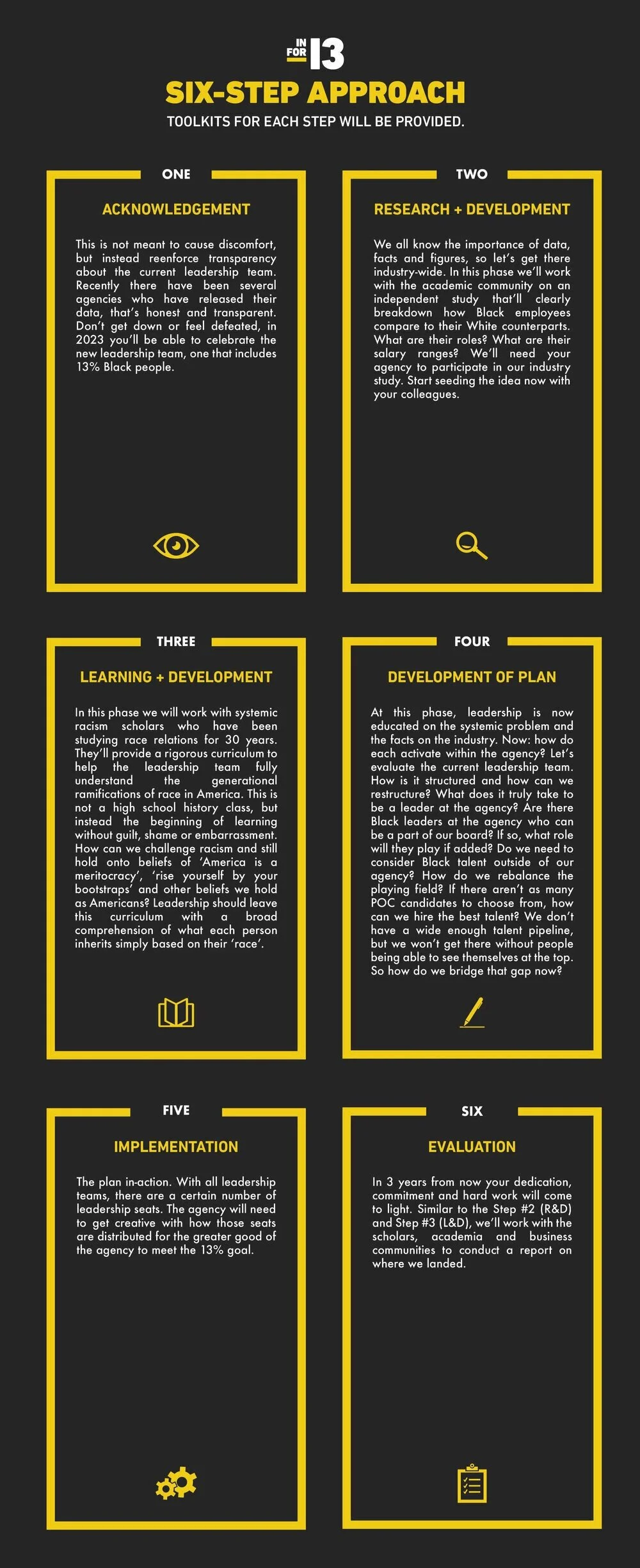Research & Development
It’s all about the data! What can each agency learn from their own data? How can they better operationalize a plan based on their individual data? Has each agency explored the different intersectionalities within the data? Data helps put certain dynamics in context.
Engaging With Data
We wanted our IN agencies to stay clear on why they are publicly sharing the data.
Show your agency’s responsibility for fixing the problem.
Show potential talent your commitment and transparency to the problem.
Show your existing talent your commitment and transparency to the problem.
Show potential new business your commitment and transparency to the problem.
And if agencies don’t share….talent will find an agency or industry that will.
Also, in this step, it's not about setting it and forgetting it. Agencies are encouraged to stay engaged with their data.
Outcome metrics vs process metrics
We wanted agencies to look further into their data and get here to see where the ‘real’ problems lay. Remember … what we measure is what we treasure.
The agency data itself is an outcome metric. Outcome metrics indicate only whether you have a problem. For example, outcome metrics could tell you that you don’t have enough women or people of color on your staff.
Process metrics will tell you where exactly to focus your attention to bring about meaningful change. Process metrics can pinpoint problems in employee-management processes such as hiring, evaluation, promotion, and executive sponsorship.*
Outcome Of This Phase
We started this phase in December 2020. It lasted until mid year 2021. The reason for the phase lasting so long? Well, many agencies were figuring out internally what is appropriate to share publicly. Agencies were unsure on how to be transparent, without legally sharing too much. Things quickly got bottlenecked, with approvals, best practices, etc.
Eventually, most of our IN FOR 13 agencies posted their diversity publicly. And are prepared to update their data as they see fit (i.e. recommended yearly or twice a year). Check out the data here by clicking on each agency’s logo to view their data.
What Did IN FOR 13 Do In This Phase?
IN FOR 13 wasn’t and isn’t the data police. We didn’t force, beg and babysit any agency to publish their data. We simply provided agencies with best practices we saw from colleagues, industry associations and tech companies. IN FOR 13 wanted to be a resource for agencies, as each navigated uncharted discussions.
We provided
For some agencies, we also completed a comparison report with the 4As 2020 diversity report with their individual agency. Agencies could use the report to see how they compared with the industry at-large and their region. Here’s a link to a sample report.
What Did Agencies Do In This Phase?
Agencies were asking to get serious about their data in this phase. Not only sure it publicly, really put a data process in place to sustain their data efforts moving forward. Figure out a way to access the data more quickly to develop trends, strategies and planning around your data - the same thinking agencies do for their client’s data.
Agencies completed
Shared data publicly and internally
Analyzed the data to see trends / problems that may need addressing
Develop plans / tactics to address those problems
Created an internal process for data management and handling
Goal is not to set it and forget it - engage with the data
PREVIOUS: MILESTONE 1
AcknowledgementUP NEXT: MILESTONE 3
Learning & Development


